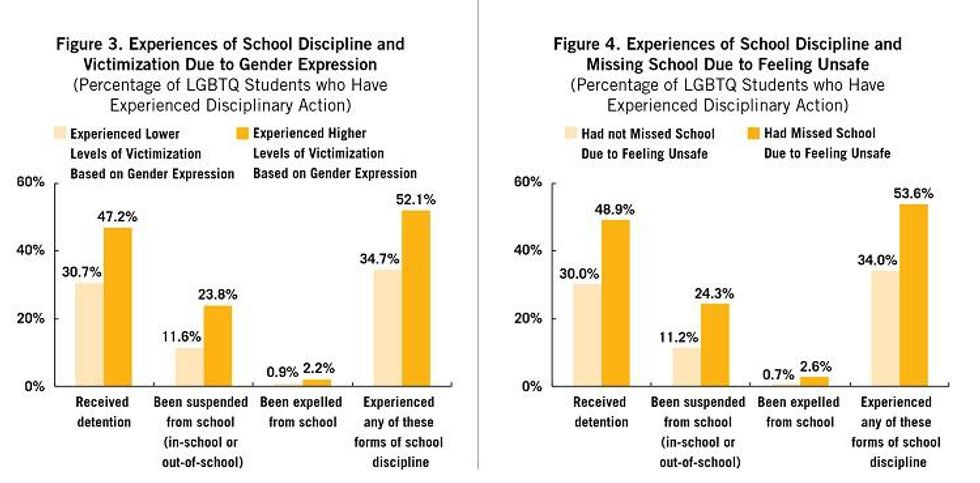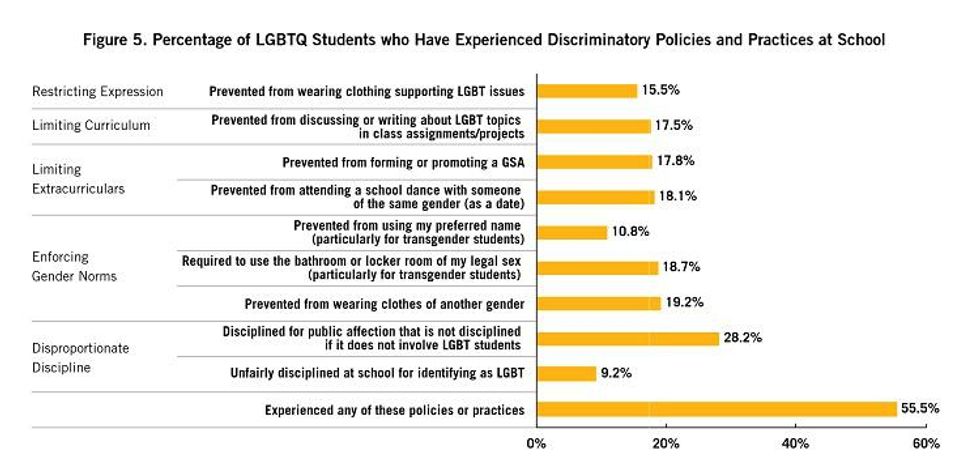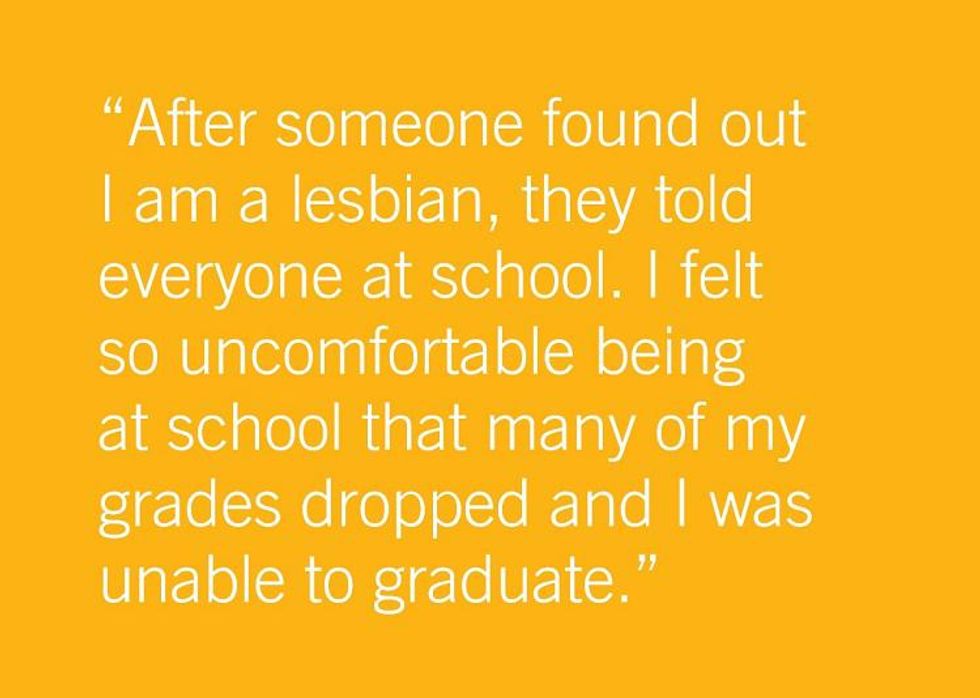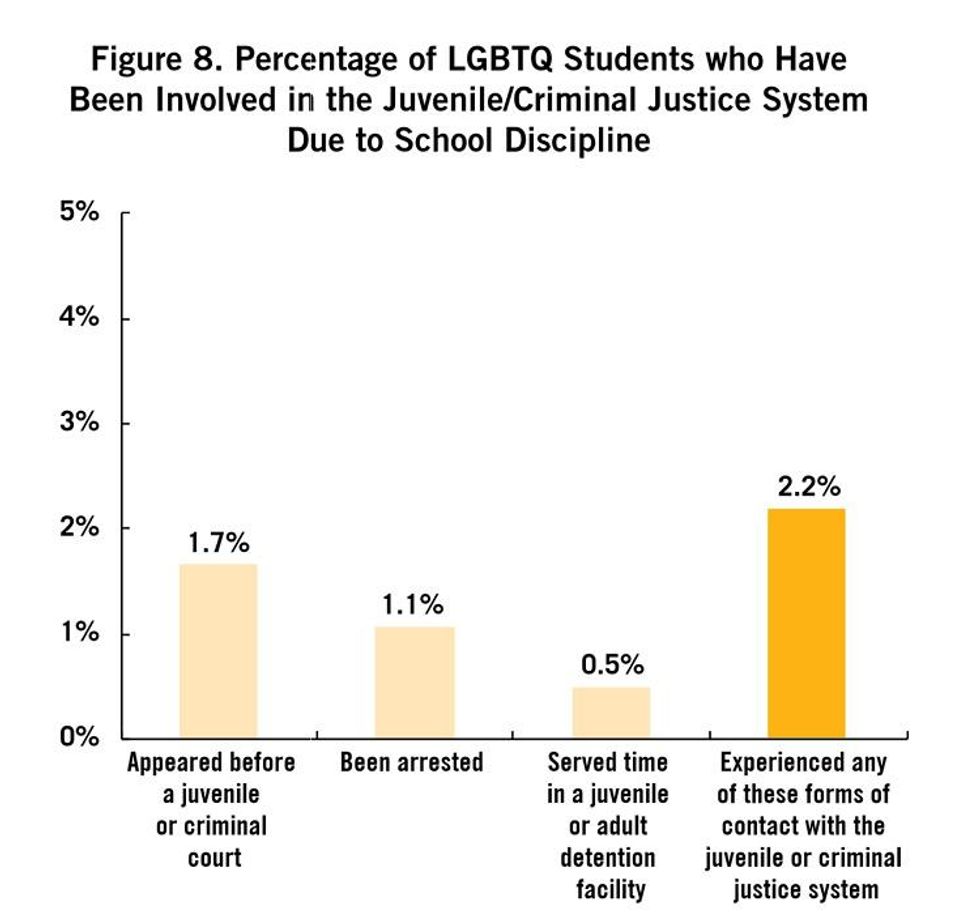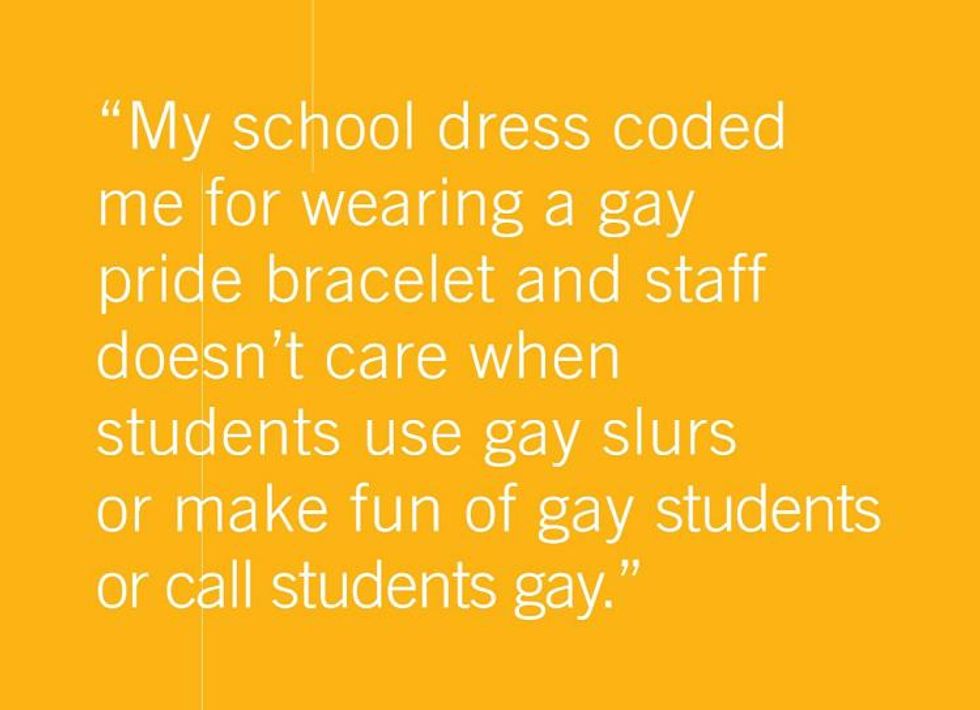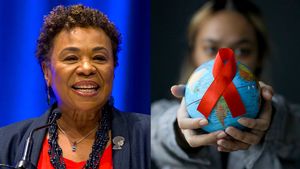GLSEN’s latest report, Educational Exclusion: Drop Out, Push Out, and the School-to-Prison Pipeline among LGBTQ Youth, provides an in-depth look at the conditions that push LGBTQ youth out of schools. From being disproportionately disciplined to navigating discriminatory policies, the report finds for many LGBTQ students, their school climates are far from welcoming and safe.
Data used in the report came from the seventh installment of GLSEN’s National School Climate Survey, conducted during the 2012-2013 school year. The final sample consisted of 7,898 students between 13 and 21 years old from all 50 states and the District of Columbia, and from 2,770 unique school districts.
Educational Exclusion examined several key areas: rates of and pathways to school discipline; discriminatory policies and practices; high school completion; and criminal/juvenile justice system involvement.
Here’s a breakdown of the report’s findings:
LGBTQ students are disproportionately disciplined.
The report found that harsh and exclusionary discipline practices (like suspension and expulsion) contributed to higher dropout rates, and may be disproportionately applied to LGBTQ students. The survey found 35.6% of LGBTQ youth received detention, 15.1% received in-school or out-of-school suspension, and 1.3% had been expelled. LGBTQ students of color were disproportionately disciplined, with 46.7 % of black students, 44.1% of Hispanic/Latino students, and 47.3% of multiracial students reporting discipline compared to 36.3% of white students. Transgender students, homeless students, and disabled students also reported higher rates of discipline than cisgender students, students living with a parent/guardian, or students without a disability.
Several factors may contribute to the disproportionate discipline LGBTQ students face. LGBTQ youth are at a higher risk of harassment and assault, and may be punished even when they are the victims in bullying incidents. Additionally, LGBTQ students who feel victimized at school have higher rates of absenteeism and face disciplinary consequences for truancy. Over half of students who missed school because they reported feeling unsafe had been disciplined, compared to just over a third of students who missed school for other reasons.
LGBTQ students face discriminatory policies and practices.
The students surveyed revealed official and unofficial policies and practices that targeted LGBTQ students. Over half of the respondents experienced LGBT-related discrimination at school. These practices included: being prevented from wearing LGBT clothing items, like a rainbow flag t-shirt (15.5%); being prevented from writing about LGBT topics in class (17.5%); being prevented from forming a GSA (17.8%); being prevented from attending a dance with a same-gender partner (18.1%); being required to use the bathroom or locker room of their legal sex (59.2% of transgender students); and being prevented from using their preferred name (42.2% of transgender students).
Most LGBTQ students plan to complete high school, but some slip through the cracks.
One of the few promising numbers in the report was the number of LGBTQ students who indicated they planned to graduate high school: 96.6%. The vast majority (94.5%) also planned to continue on to post-secondary education.
However, the survey revealed some disparities. Multiracial students were more likely to say they did not plan to complete high school (5% compared to 3.2% of white students). Non-cisgender students were also more likely to report they might not complete high school—7.6% of transgender students and 6% of genderqueer students compared to 2.4% of cisgender males, and 2.3% of cisgender females. Nearly 9% of homeless students indicated they might drop out.
The most common reason students cited for not planning to graduate or being unsure if they would graduate was a hostile school environment.
Some LGBTQ students have contact with criminal and juvenile justice systems
Only a small portion of LGBTQ students surveyed were involved with criminal or juvenile justice systems (2.2%), but 3.5% of transgender students had contact with the juvenile justice system, and a shocking 1 in 10 LGBTQ students who were homeless experienced contact, compared to 1.9% who lived with parents/guardians, and 4.1% who lived with other relatives.
Where do we go from here?
"It is abundantly clear that LGBTQ students face disproportionately high levels of school discipline due to hostile school climates that ultimately deprive many of them, not only of their education but also the success in life that education affords," said Dr. Joseph Kosciw, GLSEN’s Chief Research & Strategy Officer.
GLSEN concludes with a number of recommendations to keep LGBTQ students in school and out of the criminal/juvenile justice systems. The recommendations include laws and policies that specifically protect LGBTQ students from harassment and discrimination; culturally responsive teaching and LGBTQ people and topics in the curriculum; alternative paths to high school completion, including GED programs and alternative schools; and avoiding punitive measures during bullying incidents.
"Given the findings of Educational Exclusion, we must redouble our efforts to create supportive schools for LGBTQ students," Kosciw added. "Particularly transgender and gender nonconforming students, students experiencing homelessness, students with disabilities and students of color."










































